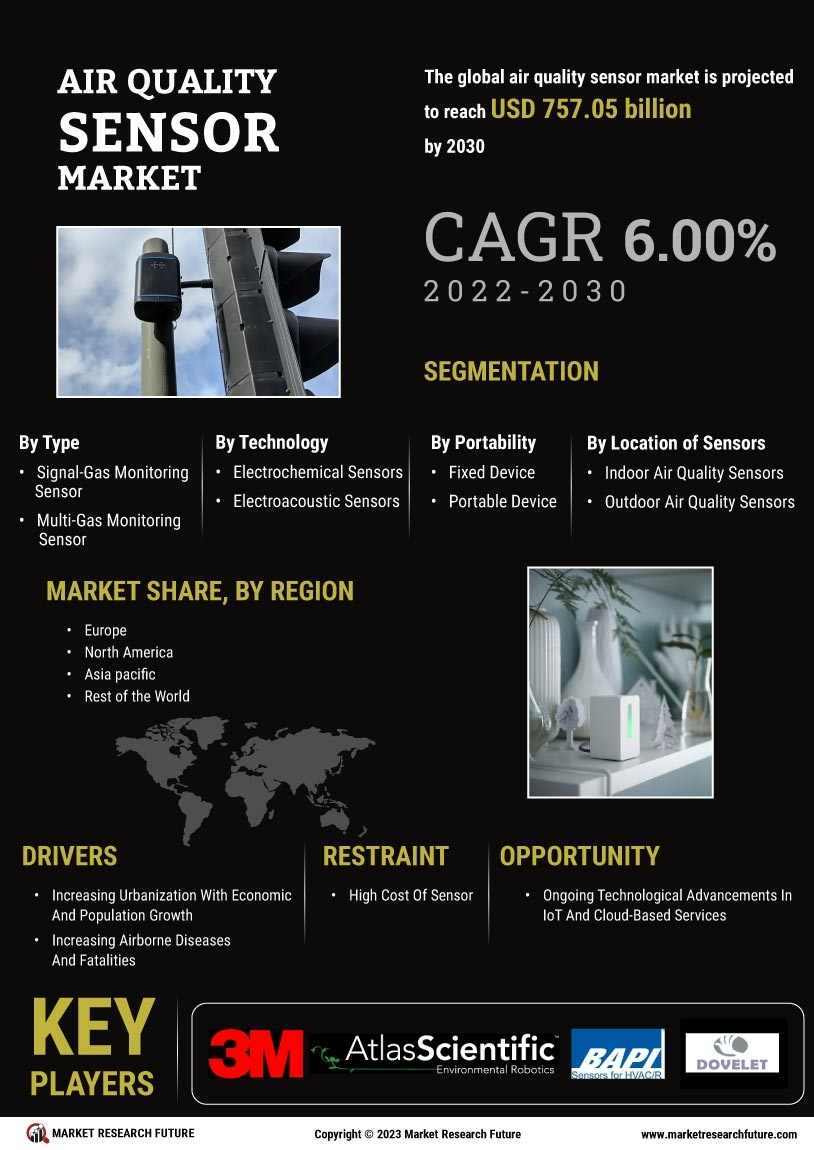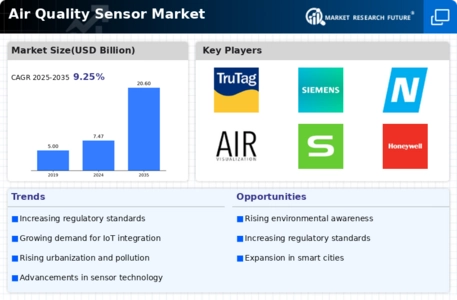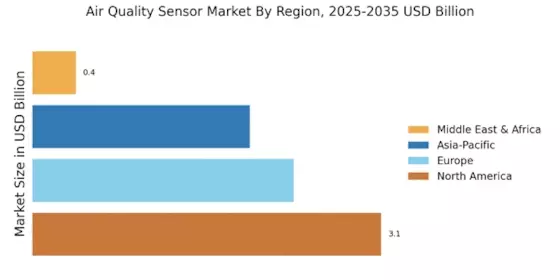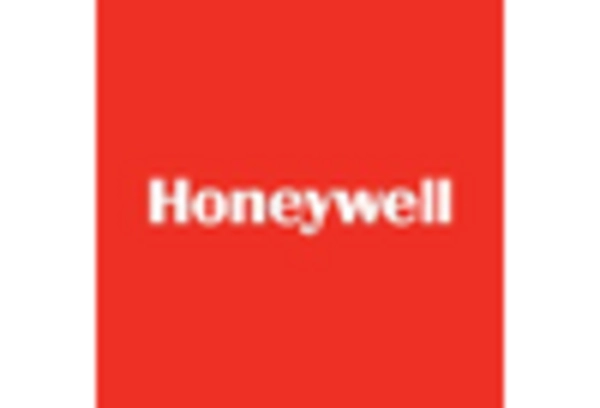Government Initiatives and Funding
Government initiatives aimed at improving air quality are significantly impacting the Air Quality Sensor Market. Various countries are implementing policies and regulations that mandate air quality monitoring, thereby driving demand for sensors. For example, funding programs for environmental monitoring projects are being established, which encourage the adoption of air quality sensors in both public and private sectors. This regulatory landscape is expected to foster innovation and investment in the Air Quality Sensor Market, as companies strive to meet compliance requirements and capitalize on available funding. The alignment of government objectives with market needs is likely to enhance the overall growth trajectory of the industry.
Integration of Smart City Initiatives
The integration of smart city initiatives is emerging as a crucial driver for the Air Quality Sensor Market. As cities evolve into smart ecosystems, the need for real-time air quality monitoring becomes paramount. Smart city projects often incorporate air quality sensors into their infrastructure to provide citizens with timely information about pollution levels. This integration not only enhances public awareness but also facilitates data-driven decision-making for urban planning and environmental management. The increasing investment in smart city technologies is expected to propel the Air Quality Sensor Market, as municipalities seek to leverage data to improve air quality and overall urban living conditions.
Health Awareness and Environmental Concerns
The growing awareness of health issues related to air quality is a significant driver for the Air Quality Sensor Market. As research continues to link poor air quality with various health problems, including respiratory diseases and cardiovascular issues, consumers are becoming increasingly concerned about the air they breathe. This heightened awareness is prompting individuals and organizations to invest in air quality monitoring solutions. Market data indicates that the demand for personal air quality sensors is on the rise, as consumers seek to monitor their immediate environments. This trend is likely to bolster the Air Quality Sensor Market, as health-conscious consumers drive the need for effective air quality management.
Increasing Urbanization and Industrialization
Urbanization and industrialization are pivotal factors influencing the Air Quality Sensor Market. As populations migrate to urban areas, the concentration of pollutants tends to increase, necessitating effective air quality monitoring solutions. According to recent data, urban areas are projected to account for over 70% of the global population by 2050, leading to heightened concerns regarding air quality. Consequently, municipalities and industries are investing in air quality sensors to monitor pollution levels and ensure compliance with environmental regulations. This trend is likely to create substantial opportunities for growth within the Air Quality Sensor Market, as stakeholders seek to mitigate the adverse effects of urban pollution.
Technological Advancements in Sensor Technology
The Air Quality Sensor Market is experiencing a surge in technological advancements, particularly in sensor technology. Innovations such as miniaturization and enhanced sensitivity are enabling the development of more accurate and reliable air quality sensors. These advancements are likely to drive market growth, as consumers and businesses increasingly seek high-performance solutions. For instance, the integration of artificial intelligence and machine learning algorithms into air quality sensors allows for real-time data analysis and predictive modeling. This not only enhances the functionality of the sensors but also provides users with actionable insights. As a result, the demand for advanced air quality monitoring solutions is expected to rise, propelling the Air Quality Sensor Market forward.

















Leave a Comment